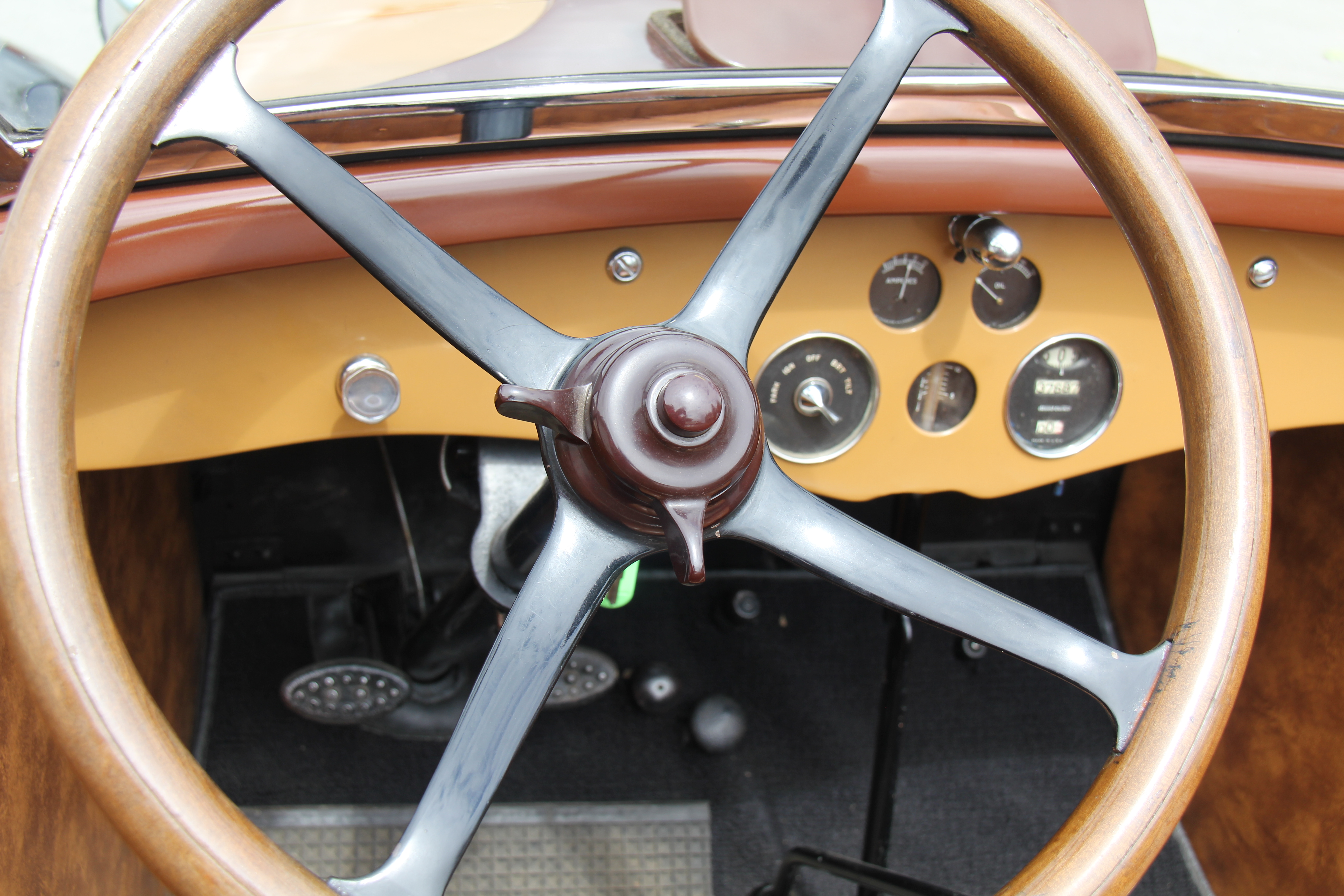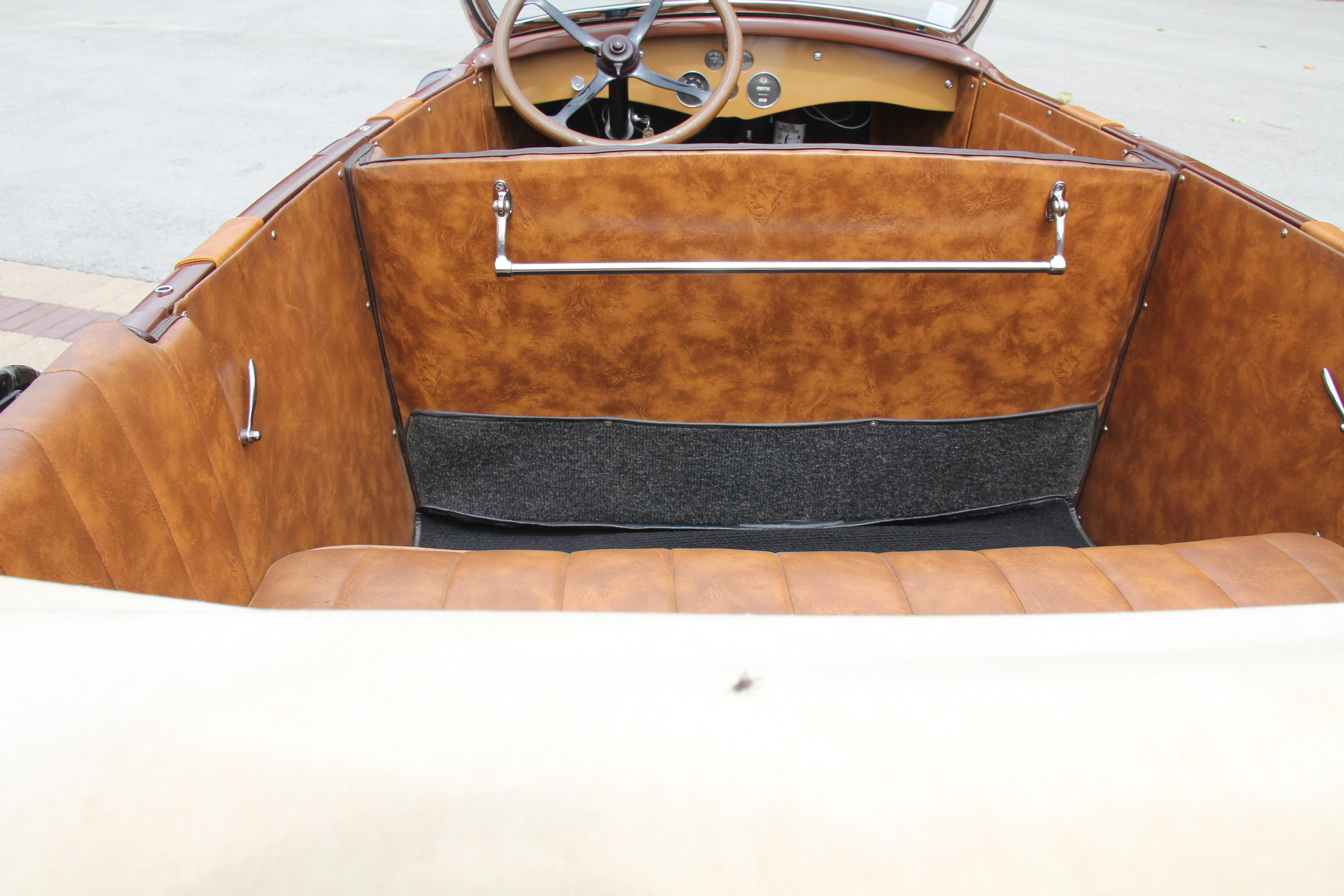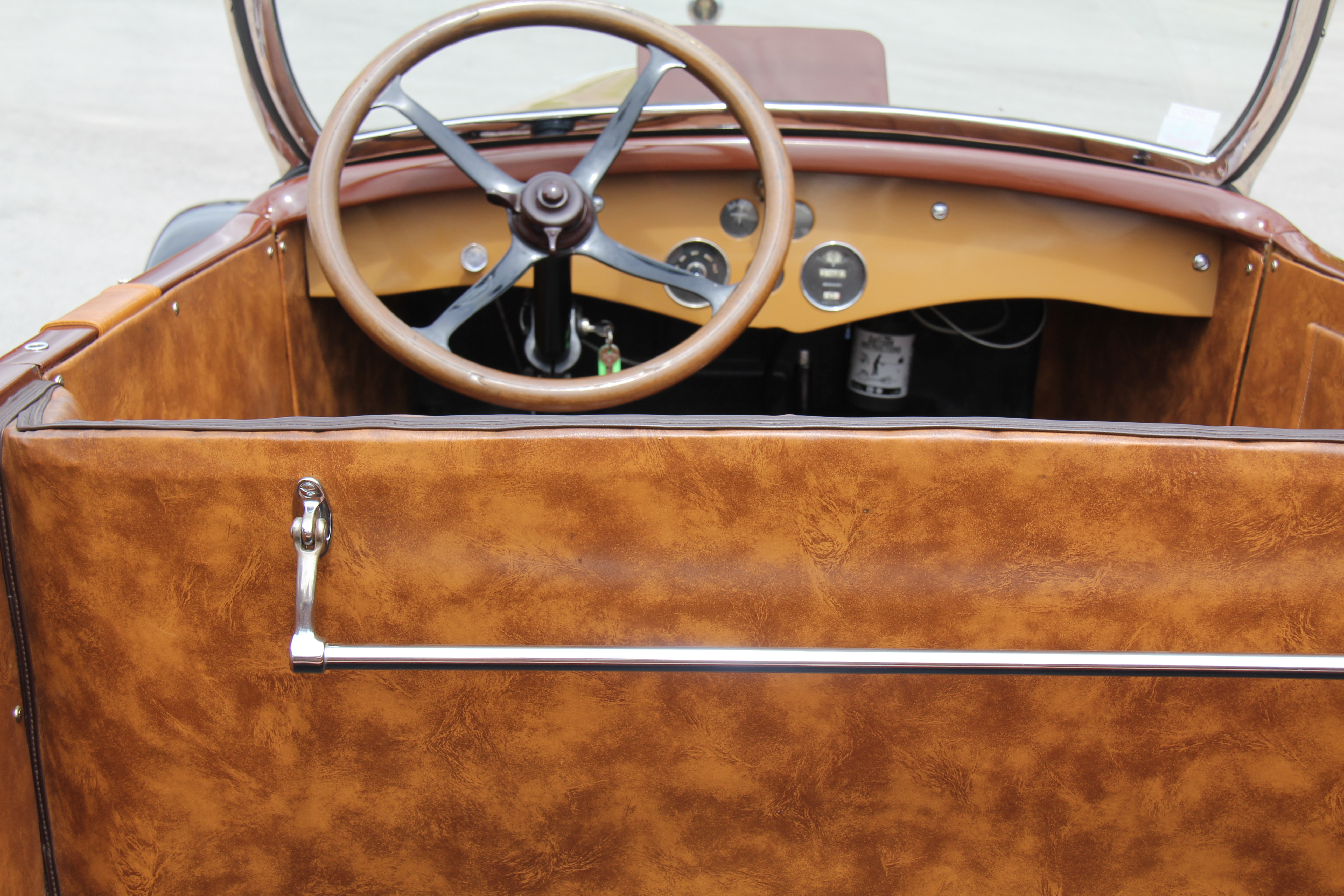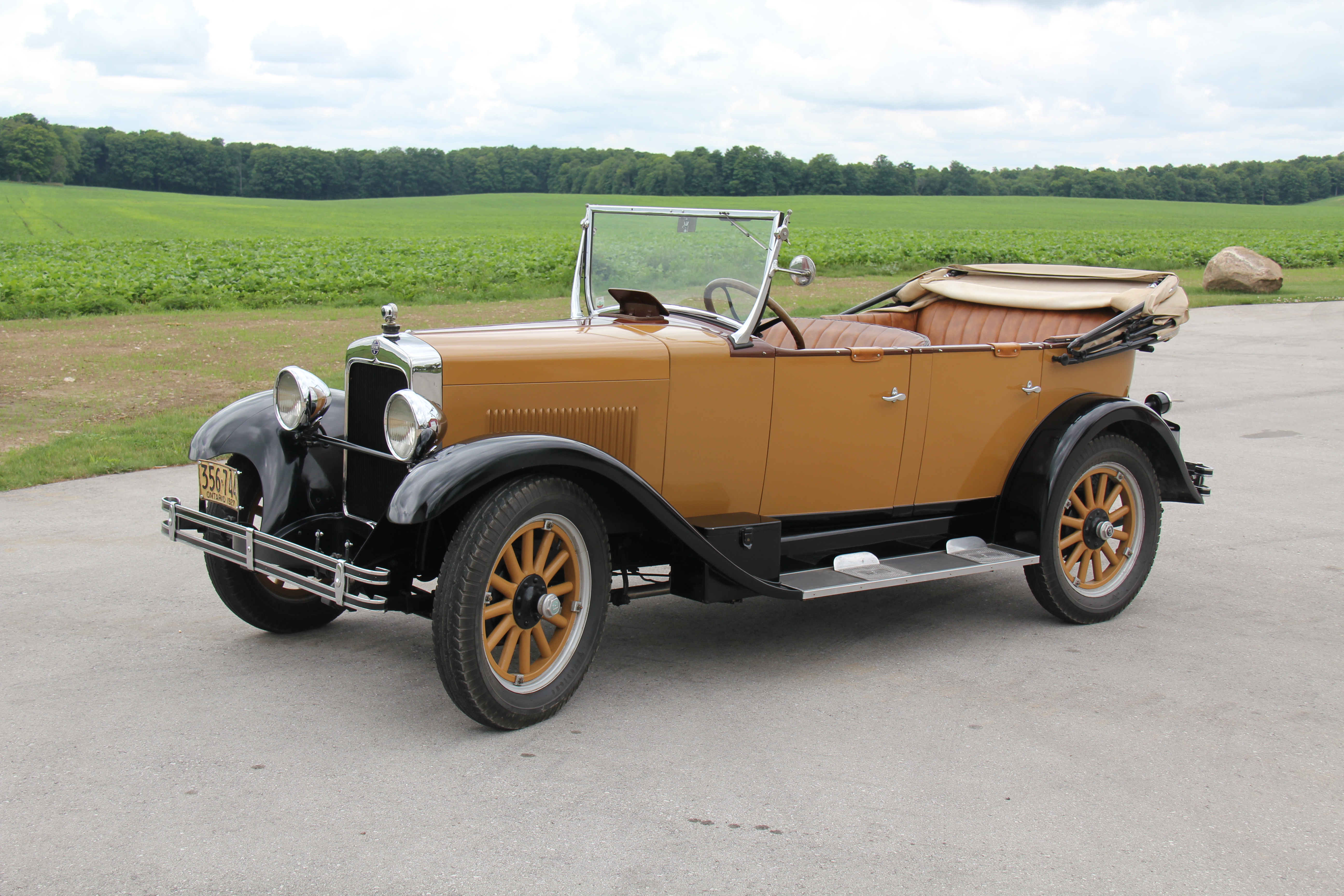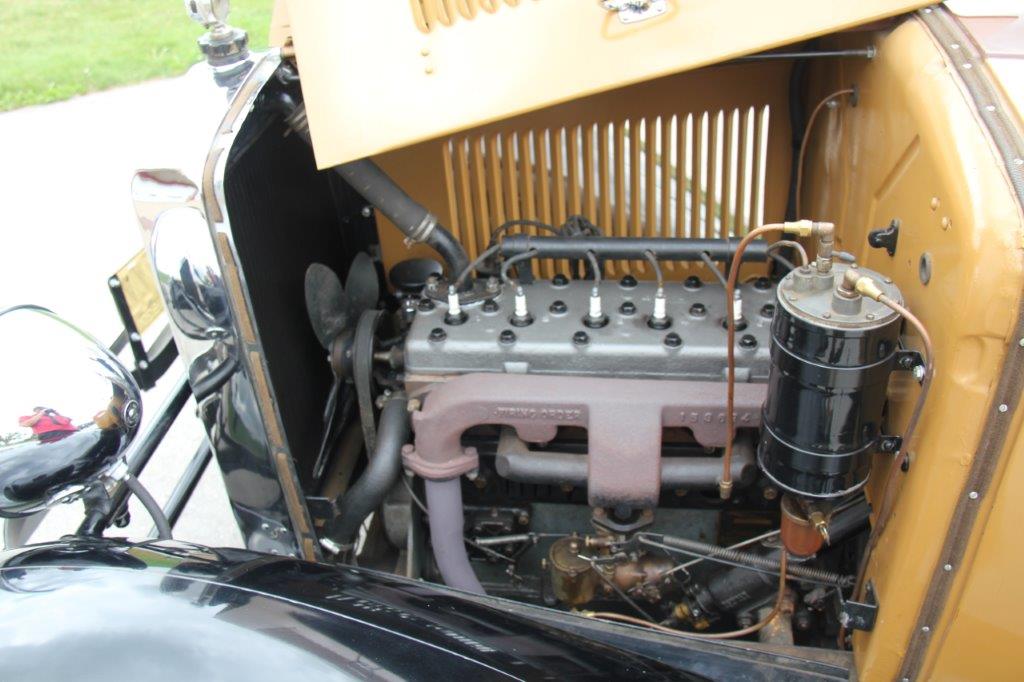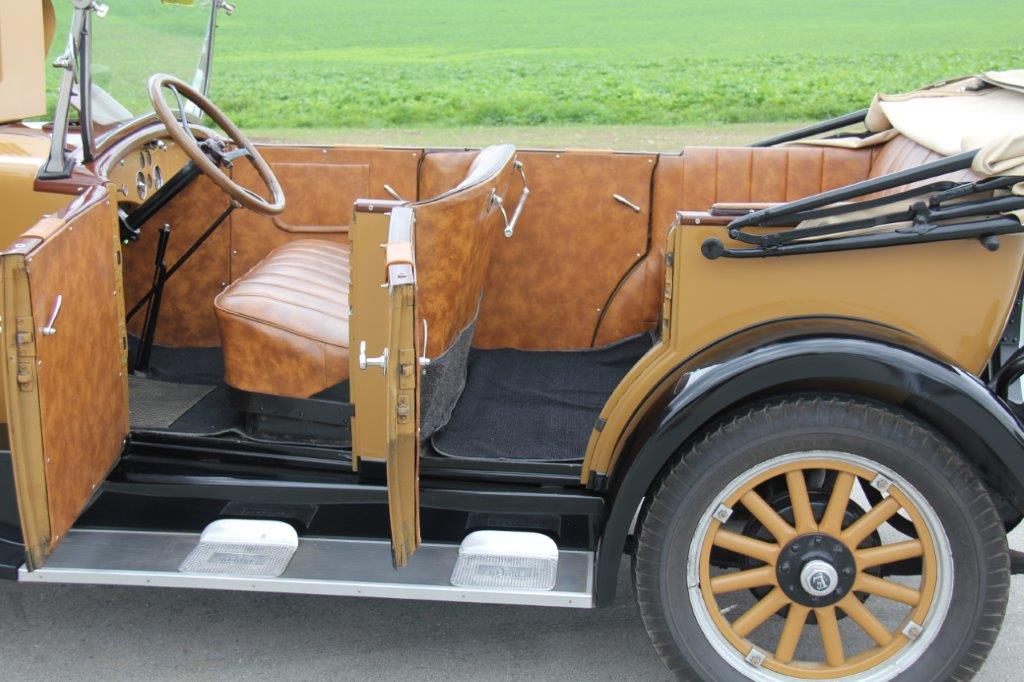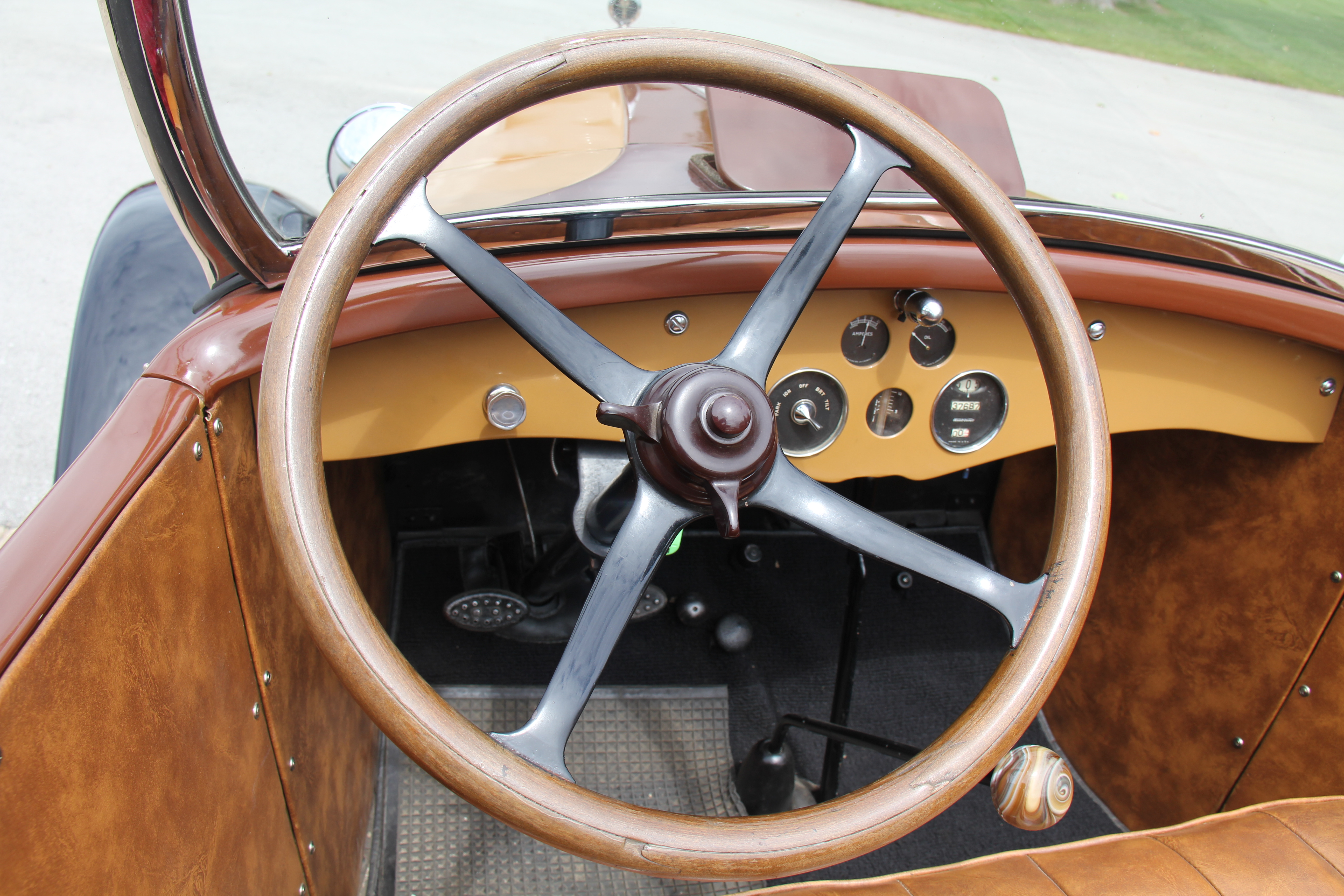1927 ERSKINE NO 04
Engine: 17hp 146 cu. in. Continental six-cylinder Three-speed manual transmission
Front and rear semi-elliptic leaf springs Four-wheel drum brakes.
Wheelbase: 108"
Only four (4) are known to exist: this one in Ontario, one in Argentina, one in Austria, one in the USA.
From South Bend, Indiana, came a car that was directly aimed at the masses offering comfort, performance and affordability yet not sacrificing quality one bit. Introduced by, and named after Studebaker President, Albert Russell Erskine, the economical Erskine made its formal debut in late 1926, although not in the United States. It was debuted at the Grand Palais in Paris, where it was officially proclaimed the hit of the show and then off to the Olympia Motor Show in London, where headlines proclaimed it as “the greatest value in British history.”
They were all correct – never before had so much been offered in a car for such a low price. Powered by a 146 cubic inch Continental six, the Erskine was a car that spoke of class and elegance for a price well below that of its counterparts. Perhaps the greatest impression was made by its styling, which came courtesy of the famous Ray Dietrich, whose name was also synonymous with other greats such as Packard and Duesenberg.
Although the Erskine was a smash in Europe, the introduction of Henry Ford’s four-cylinder Model A placed a damper on sales of the Erskine in the US, and by 1930 both Chevrolet and Ford had a low price car for the masses. The Erskine tried to compete, but with only 22,371 cars built for 1930, it would prove to be a difficult endeavor. The car that had caused such a stir in Europe was absorbed into the Studebaker line and the Erskine name passed into the annals of automotive history
The Roaring Twenties
The Roaring Twenties was a time of excess and extravagance. . . the time of flappers, short skirts, bath tub gin, and, in general, just plain overindulgence. It can also be called the first Golden Age of the American automobile, especially the luxury end of the business. Names such as the “Three P’s” (Pierce-Arrow, Peerless, and Packard) were American automobile royalty held court. Along with Rolls-Royce and Duesenberg among others, these automakers made chassis for the booming custom coach builders such as Brewster, Dietrich, LeBaron, and Rollston who finished these classics off for the chauffeurs of their well heeled clientele. While the rest of the population was also served with Ford’s Model T and in 1928 the Model A while General Motors, Chrysler and independents covered the balance of the market.
“During this period the auto business became more standardized with internal combustion front engine cars coming to dominate. `In 1919, 90% of cars sold were open; by 1929, 90% were closed . . . engine (development) continued at a rapid pace with multi-valve overhead camshaft engines produced at the high end and V-8, V-12, and even V-16 engines produced for the ultra-rich. . . at the end of the vintage period (1929), tempered glass was invented…’”
During this time the fact that cars were now found everywhere (low prices and installment sales allowed more people to afford one) highways had to be made useable by drivers. Also highway signage had to be standardized, maps became more common, highways themselves were improved. In 1909 the first mile of concrete highway was laid in Detroit as a demonstration and by the Twenties more and more paved roads were able to be enjoyed. In the US it was said that a Republican government laid concrete highways while a Democratic one laid asphalt. By the Twenties transcontinental highways were in operation and the Dixie Highway network was built to carry Snow-Birds to Florida for the winter.
So as things got better, what other obstacles did drivers of this period have to surmount: This writer remembers an older gentleman recalling fondly that he and some friends took a new Model A (so just after 1928) on a drive to from Detroit to Chicago and they had one tire that made it all the way to Chicago without going flat! They had eleven flats on the other tires but that one tire made it all the way. It was a lot of years later and he still had a twinkle in his eye as he recounted the story. He was still amazed!
H.A. Tarantous, managing editor of MoToR Member Society of Automotive Engineers wrote that the number of US passenger car builders decreased from 175 in 1922 to 70 in 1925. That number was further reduced to 44 by 1929. Many manufacturers could not “keep pace with bigger production units” and falling prices.” This would continue to be true for the rest of the period up to and including the economic cliff that spelled doom for so many during the Great Depression.
There were many fine name plates made then for the driving public which can not be seen on the road anymore but can be seen here in the Lang Collection. These include the “Car Beautiful” 1926 Franklin, the “Greatest Value” 1927 Erskine, and the Canadian built 1929 Oakland. And although they were and are fine examples of the period, their manufacturers for one reason or another could not compete and so they passed into the Annals of Automotive History. They were all designed to be owner driven and enjoyed and they continue to be owner driven and enjoyed to this day!

